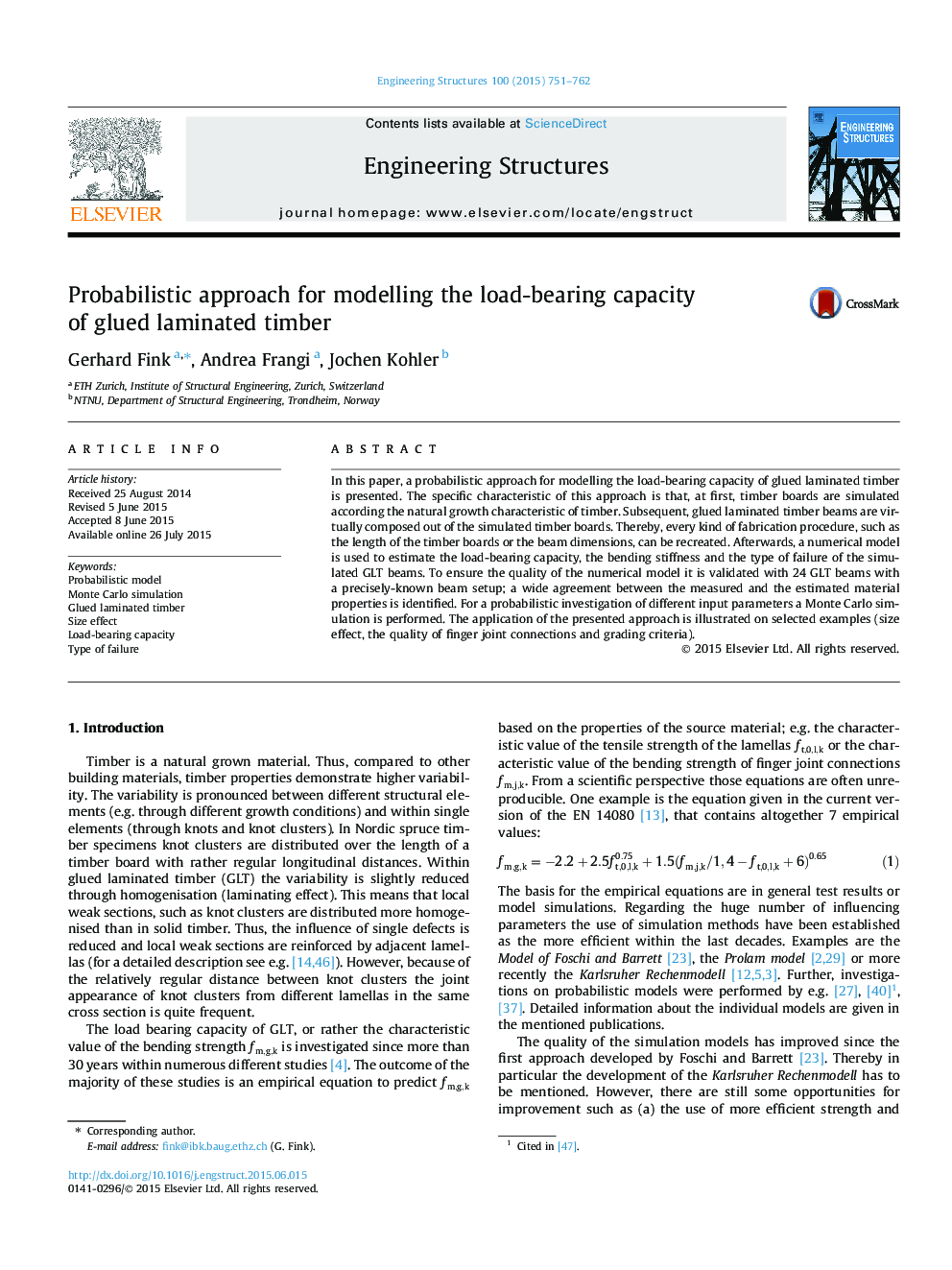| Article ID | Journal | Published Year | Pages | File Type |
|---|---|---|---|---|
| 266156 | Engineering Structures | 2015 | 12 Pages |
•Probabilistic approach for modelling glued laminated timber.•Validated with 24 GLT beams having well-known local material properties.•Influence of beam dimensions, grading criteria, and fabrication criteria.
In this paper, a probabilistic approach for modelling the load-bearing capacity of glued laminated timber is presented. The specific characteristic of this approach is that, at first, timber boards are simulated according the natural growth characteristic of timber. Subsequent, glued laminated timber beams are virtually composed out of the simulated timber boards. Thereby, every kind of fabrication procedure, such as the length of the timber boards or the beam dimensions, can be recreated. Afterwards, a numerical model is used to estimate the load-bearing capacity, the bending stiffness and the type of failure of the simulated GLT beams. To ensure the quality of the numerical model it is validated with 24 GLT beams with a precisely-known beam setup; a wide agreement between the measured and the estimated material properties is identified. For a probabilistic investigation of different input parameters a Monte Carlo simulation is performed. The application of the presented approach is illustrated on selected examples (size effect, the quality of finger joint connections and grading criteria).
